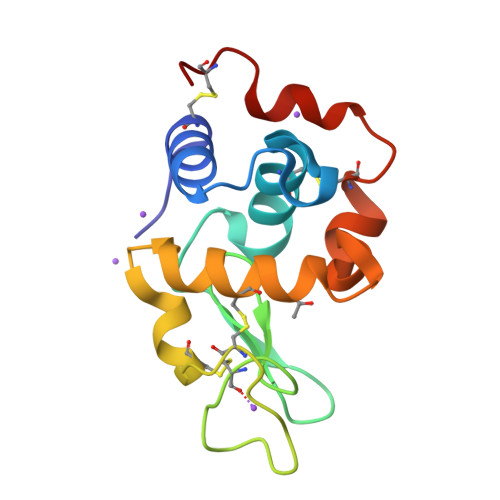Non-Contact Universal Sample Presentation for Room Temperature Macromolecular Crystallography Using Acoustic Levitation.
Morris, R.H., Dye, E.R., Axford, D., Newton, M.I., Beale, J.H., Docker, P.T.(2019) Sci Rep 9: 12431-12431
- PubMed: 31455801
- DOI: https://doi.org/10.1038/s41598-019-48612-4
- Primary Citation of Related Structures:
6QQ3 - PubMed Abstract:
Macromolecular Crystallography is a powerful and valuable technique to assess protein structures. Samples are commonly cryogenically cooled to minimise radiation damage effects from the X-ray beam, but low temperatures hinder normal protein functions and this procedure can introduce structural artefacts. Previous experiments utilising acoustic levitation for beamline science have focused on Langevin horns which deliver significant power to the confined droplet and are complex to set up accurately. In this work, the low power, portable TinyLev acoustic levitation system is used in combination with an approach to dispense and contain droplets, free of physical sample support to aid protein crystallography experiments. This method facilitates efficient X-ray data acquisition in ambient conditions compatible with dynamic studies. Levitated samples remain free of interference from fixed sample mounts, receive negligible heating, do not suffer significant evaporation and since the system occupies a small volume, can be readily installed at other light sources.
Organizational Affiliation:
School of Science and Technology, Nottingham Trent University, Nottingham, NG11 8NS, UK. rob.morris@ntu.ac.uk.





















